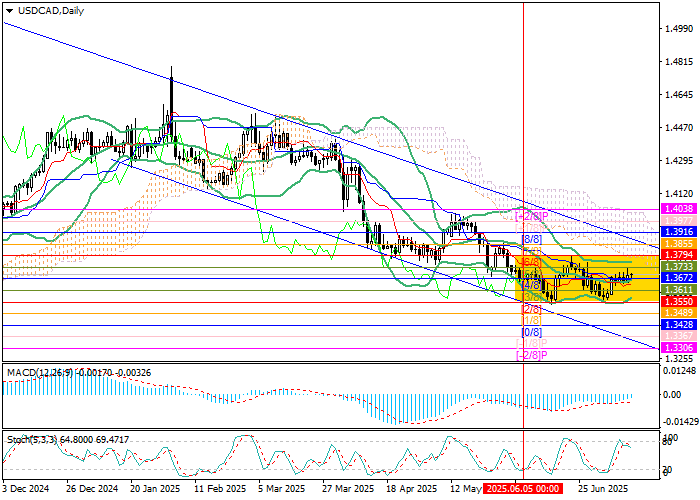Canadian Labor Market Shows Impressive Recovery
Canada’s economy generated 83,100 new jobs in June, marking the first significant employment rise since early this year. Strong gains were recorded primarily in wholesale and retail trade sectors (+34,000 jobs) and healthcare (+17,000 jobs). Regional employment dynamics revealed positive momentum in Alberta, Ontario, and Quebec, offsetting losses in Atlantic Canada. The solid employment data could restrain the Bank of Canada from adjusting interest rates, especially if the upcoming core inflation figures, set for release tomorrow at 14:30 GMT+2, remain stable or moderate only slightly from previous levels (0.6% monthly, 2.5% annually).
Trade Policy Tensions Intensify with Proposed US Tariffs
The US administration under President Donald Trump informed Canadian Prime Minister Mark Carney that tariffs on Canadian goods would increase sharply by 35% starting August 1, compounding existing sectoral tariffs. Trump urged Canadian manufacturers to relocate their operations to US soil to bypass these punitive measures. Earlier this year, tariffs were raised by 25% for most products except energy and petroleum, subject to a 10% rate.
US Dollar Gains Support from Strong Employment Data
The US Dollar Index (USDX) maintains stability near 97.70, buoyed by positive employment figures. June nonfarm payrolls surged by 147,000 positions, significantly surpassing forecasts (111,000) and previous month’s data (144,000). Unemployment fell to 4.1% from the expected 4.3%, reflecting resilient labor market conditions despite a slight deceleration in average hourly earnings (0.2% monthly, 3.7% annually).
Investors continue assessing potential monetary policy shifts from the Federal Reserve, especially amid recent remarks by President Trump, suggesting current interest rates (4.25–4.50%) may be inflated by approximately 3 percentage points, allegedly costing the government an extra $360 billion annually in debt refinancing. Speculation increases about possible early departure for Fed Chair Jerome Powell, whose term officially ends in May 2026, with Kevin Hassett and former economic advisor Kevin Warsh mentioned as potential replacements.
Technical Analysis: USD/CAD Levels and Indicators
USD/CAD remains within a broad descending channel, temporarily consolidating within the 1.3550–1.3794 range (Murray levels [2/8]–[6/8]). Significant directional movement requires a breakout from this channel.
Bollinger Bands reflect neutral dynamics, transitioning horizontally. MACD’s histogram remains negative but contracts gradually, signaling potential stabilization. Stochastic shows bearish divergence near the overbought territory, hinting at possible short-term downward correction.
- Resistance Levels: 1.3794, 1.3916, 1.4038
- Support Levels: 1.3550, 1.3428, 1.3306

Trading Strategies for USD/CAD
Short scenario: SELL STOP orders recommended below 1.3550, targeting levels at 1.3428 and 1.3306, with Stop Loss at 1.3630. Suggested timeframe: 5–7 days.
Long scenario: Consider BUY STOP positions above 1.3794, aiming for 1.3916 and 1.4038, setting Stop Loss at 1.3700.

